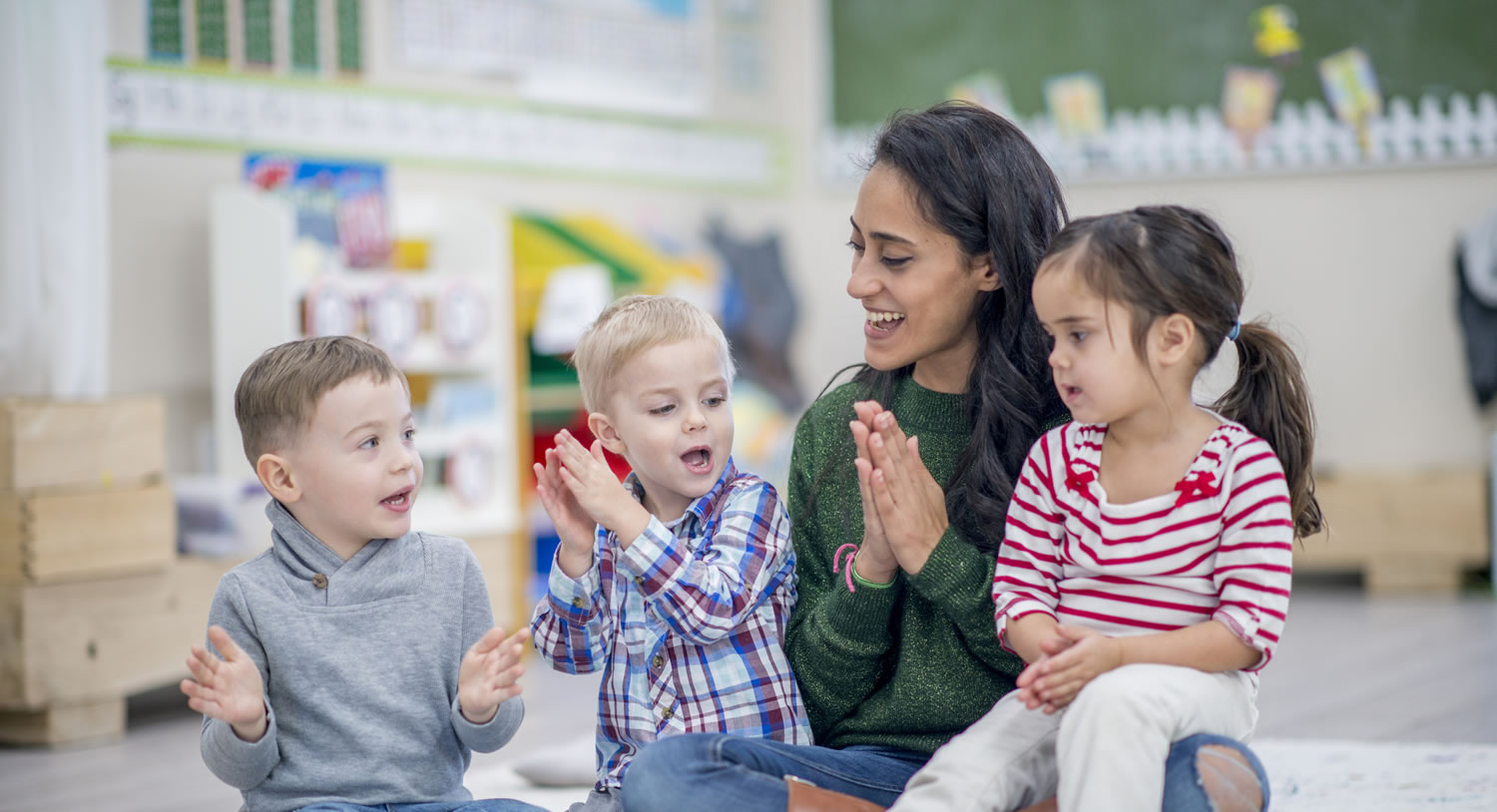5 ways educators play with language and sound
Published on Wednesday, 25 August 2021
Last updated on Tuesday, 24 August 2021

Young children are a gigglesome bunch who learn through play, and there’s much to be gained when kaiako join in the fun.
The Ministry of Education says humour, funny voices, nonsense words and silly rhymes are all seriously good ways to encourage language and communication learning in the early years.
So, let’s explore the benefits of word playfulness, and share ways for under fives to laugh and learn with educators.
Why is playfulness a positive thing for language and communication learning?
The government explains that, ‘Tamariki are more likely to experiment and see language as something that can delight others’ when grown-ups are playful with gesture and speech sounds.
Little learners respond to the enthusiasm of educators and other care-givers, and word play isn’t just interesting in the moment.
A focus on playfulness can encourage children to be more confident and creative in their use of te reo Māori, and it’s a valuable way to develop children’s phonological awareness.
Phonological awareness is the ability to recognise and work with the sounds of spoken language, and the experts describe this awareness as a, ‘Leading predictor for reading and writing success.’
Associate Professor, Brigid McNeill is one of the brains behind the Better Start Literacy Approach and she explains that phonological awareness is an awareness that words are made up of smaller parts and smaller sounds, and it can be taught by:
- Splitting big words into little syllables (e.g. ‘el-e-phant’)
- Pointing out rhyming words (e.g. ‘cat’ and ‘hat’), and
- Breaking small words into parts (e.g. ‘c-a-t’).
To add fun to phonology, educators can get preschoolers to clap, stomp or jump the number of syllables they hear in a word (e.g. five jumps for ‘hipp-o-pot-a-mus’), however, it’s important to remember that word playfulness isn’t just beneficial for ‘big’ kids.
Babies and toddlers will also pick up on a fun vibe from educators.
What are five ways that kaiako can be playful with language and sound?
Fun language and funny sounds are engaging throughout the early years, and the Ministry Education encourages educators to take a light-hearted approach:
- Kaikako can immerse babies, toddlers and preschoolers in rhyme and rhythm through waiata, stories, poems, nursery rhymes, and made-up ditties. For instance, an educator might bounce a baby on their knee in time with a rhythmic, “Bing, bong, boo, bing, bong, boo!”
- They can change the sounds at the beginning of words and invent silly sentences and phrases, like “Andy Wandy” or “Jade’s jandals jiggle like jelly!“
- Educators can also be playful with their reading voice by changing their expression, speed and tone. For example, they can use distinct voices for the different dogs in Lynley Dodd’s Hairy Maclary from Donaldson’s Dairy.
Kaiako can also introduce ideas, like “How do you say that in a dancing bear voice?” - It’s also fun to play ‘Guess the Sound’ games, using found objects that can make different noises. Such as by tapping shells, tearing paper and twanging rubber bands on a tissue box.
- As children grow older, a sense of fun can also help them make ‘sound-letter associations.’ For instance, an educator might say, “Those big capital letters are telling me that I have to read that word very loudly – ELEPHANT!” Or, “Who can see something on this page that rhymes with ‘cat’? What else can you see in our room that begins with a ‘c’ sound?” (which encourages littlies to look for cups, crayons, clocks and coats).
You’ll see that enthusiasm, creativity and interactivity are common threads in all these practices, and there lots of ways for kaiako to find the fun in educational experiences and give young linguists a laugh as they learn.
Reference
Further reading
Research around storytelling and rhythmic gestures
Resources to support your child’s early literacy success
The importance of questions during storytime
Related Articles

Moon squirters and broccoli trees - The power of child focused language
The role of early childhood services in encouraging and promoting healthy eating habits among children.

The role of sound play in early childhood services
Why sound is such an integral part of children's development and helps them communicate and learn.

The power of language for thinking and learning
Learn how preschool-aged children use language to think and learn in this contribution by paediatric speech pathologists Tania Kelly and Janice Zee, directors of Little Birdie Books.
